Disclosure: This article contains affiliate links. We may earn a commission from purchases at no extra cost to you, which helps our travel content.
When I told my developer buddies I was planning to tackle South Korea on just $50 a day, they looked at me like I'd suggested debugging code with my eyes closed. But after years of balancing remote work with budget travel, I've mastered the art of experiencing premium destinations without the premium price tag. My recent two-week journey from Seoul's neon-lit streets to Busan's serene coastlines proved that South Korea—a country often dismissed as too expensive—can absolutely be conquered on a modest budget, even for a plant-based eater like myself.
Navigating Seoul Without Breaking the Bank
Seoul initially feels like a maze of towering skyscrapers and endless subway lines, but it quickly reveals itself as one of the most budget-friendly capital cities in Asia if you know the right moves.
The T-Money card became my best friend within hours of landing. For just 4,000 won (about $3) for the reloadable card itself, I accessed the entire subway and bus network at discounted rates. A typical subway ride costs around 1,350 won ($1), making it possible to explore multiple neighborhoods in a day without budget concerns.
For accommodation, I bypassed the trendy Gangnam and Myeongdong districts and instead booked a guesthouse in Hongdae. This university area offers clean, basic rooms for around $20-25 per night, and the youthful energy is contagious. I used my travel sleep sack to ensure I always had a clean sleeping surface, which has been a game-changer for budget accommodations throughout my travels.
The real money-saver was Seoul's abundance of free attractions. Hiking Bukhansan National Park gave me both exercise and breathtaking city views without spending a dime. The changing fall colors made every trail look like a painting. Similarly, exploring the grounds of Gyeongbokgung Palace is free, though entering the buildings costs a modest 3,000 won ($2.50) – absolutely worth it during the fall when the ancient architecture contrasts with fiery maple trees.

💡 Pro Tips
- Buy a T-Money card immediately upon arrival to save on all public transportation
- Stay in university neighborhoods like Hongdae for cheaper accommodation and food options
- Download Naver Map app instead of Google Maps for more accurate public transit directions in Korea
Eating Vegan in Korea (Without Emptying Your Wallet)
Before arriving, I worried my plant-based diet would force me to splurge on specialized restaurants. The reality was quite the opposite. Korean Buddhist temple cuisine is naturally vegan and surprisingly affordable if you know where to look.
In Seoul, Balwoo Gongyang near Jogyesa Temple offers a temple food lunch set for around 10,000 won ($8) that includes multiple small dishes, rice, and tea. The flavors are subtle but deeply satisfying, focusing on seasonal vegetables and fermented ingredients.
For everyday meals, I discovered that many local spots serve pajeon (vegetable pancakes) and bibimbap that can easily be made vegan by requesting 'no egg' and 'no meat' (show the phrase '고기 없이 주세요' on your phone). A filling bibimbap typically costs 7,000-9,000 won ($6-7.50).
Street food markets became my dinner go-to, with Gwangjang Market offering hearty portions of tteokbokki (rice cakes in spicy sauce) and vegetable kimbap for under $5. I always carried my collapsible food container for leftovers, which saved me countless won and reduced food waste.
In Busan, the Jagalchi Fish Market might seem like vegan kryptonite, but nearby stalls sell incredible vegetable tempura and seaweed soup. The Haeundae area also has several affordable plant-based cafes where you can get a solid meal for under $10.
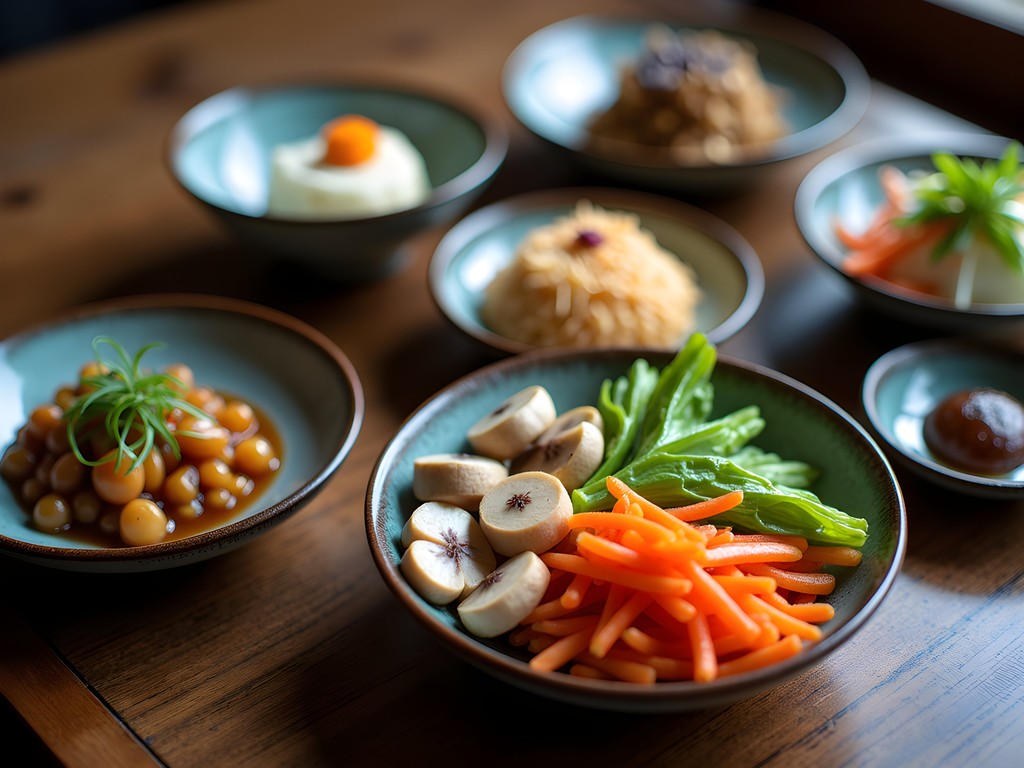
💡 Pro Tips
- Learn the Korean phrases for 'no meat' and 'no fish' before your trip
- Buddhist temples often serve affordable vegan meals on certain days
- Download the Happy Cow app to find vegan-friendly restaurants in both cities
Seoul to Busan: The Budget Traveler's Route
The journey between Korea's two largest cities deserves special attention, as transportation choices can make or break your budget.
While the KTX bullet train is tempting at just 2.5 hours, its 59,000 won ($45) price tag doesn't fit a $50 daily budget. Instead, I opted for the Mugunghwa slow train, which takes about 5.5 hours but costs only 28,600 won ($22). The bonus? Stunning countryside views as you traverse the Korean peninsula.
I made the most of this transit day by downloading episodes of my favorite podcasts and Korean language lessons on my noise-canceling earbuds, which blocked out train noise while preserving my sanity (and battery life) during the journey.
Another option is the overnight bus, which costs around 23,000 won ($18) and saves you a night of accommodation. I'm usually hesitant about overnight buses, but Korean highways are impeccably maintained, making for a surprisingly comfortable ride. Pro tip: book these tickets 2-3 days in advance through the Korean bus booking app or at the terminal, as they do sell out.
If you're really pinching pennies and have time to spare, the 'Doing' route combines local buses and trains for under $15 total, though it takes nearly 7 hours with transfers. I tried this on my return journey and while time-consuming, it offered glimpses of small-town Korea I would have otherwise missed.

💡 Pro Tips
- Book transportation between cities at least 2-3 days in advance for best prices
- Consider an overnight bus to save on accommodation costs
- Download entertainment and work materials before long journeys, as WiFi can be spotty
Busan on a Budget: Beaches, Temples, and Hidden Gems
Busan immediately charmed me with its laid-back coastal vibe – a refreshing contrast to Seoul's intensity. And surprisingly, it was even more budget-friendly.
Accommodation in Busan averages 20% less than Seoul. I stayed at a clean guesthouse in Nampo-dong for just $18 per night, perfectly located near both the famous Jagalchi Market and Busan's best budget food options. To keep my electronics charged and organized in the small room, my travel power strip was invaluable, turning one outlet into a charging station for all my devices.
The city's best attractions won't cost you much. Haeundae Beach is completely free and stunning in fall when crowds thin out but temperatures remain pleasant. Gamcheon Culture Village, with its colorful hillside homes and street art, only asks for a small donation. And the breathtaking Haedong Yonggungsa Temple perched on coastal cliffs costs nothing to visit – though getting there via public bus takes about 45 minutes from downtown.
For a unique experience, visit the Spa Land jjimjilbang (Korean bathhouse) in the Shinsegae Department Store. While not dirt-cheap at 15,000 won ($12), it provides access to multiple saunas, hot pools, and relaxation areas – plus you can stay overnight if you're comfortable sleeping on the floor with other patrons. After two weeks of budget travel, this splurge felt completely justified for my surfer's shoulders.
Don't miss hiking on Geumjeongsan Mountain, where fall foliage creates a spectacular backdrop for the 17th-century mountain fortress. Pack a picnic from a local convenience store (another budget hack), and use my favorite travel companion, the collapsible water bottle, which has saved me countless plastic bottles and money throughout my travels.

💡 Pro Tips
- Use Busan's affordable city bus system with your T-Money card from Seoul
- Visit Busan's attractions early morning or evening to avoid tour groups
- Check out Nampo-dong area for budget-friendly accommodation central to major attractions
Digital Nomad Tips: Working While Budget Traveling
Balancing remote work with budget travel in South Korea proved easier than expected, largely thanks to the country's exceptional digital infrastructure.
Seoul and Busan both offer abundant free WiFi in public spaces, but I preferred the stability of dedicated coworking spaces for development work. In Seoul, my go-to became Garage Lab in Yeonnam-dong, where a day pass costs 10,000 won ($8) with excellent amenities. Busan's best option was Brown Hands Coffee in Seomyeon, where purchasing a single Americano (4,500 won/$3.50) grants all-day access to reliable WiFi and comfortable seating.
To maintain productivity while hopping between locations, I relied heavily on my portable laptop stand, which transforms any cafe table into an ergonomic workstation. This simple tool has saved my neck and wrists during countless remote work sessions around the world.
South Korea's 4G/5G coverage is exceptional, even in subway tunnels, making mobile hotspot a reliable backup. I purchased a 10-day unlimited data eSIM from KT Olleh for 33,000 won ($25), which proved invaluable for quick work check-ins while exploring.
For video calls with US clients (managing the 13-14 hour time difference), I found Seoul's 24-hour cafes particularly useful. Chain stores like Compose Coffee and A Twosome Place often have quiet corners where you can take early morning calls without disturbing others. In Busan, Stinky Cat Coffee near Gwangalli Beach became my 6 AM video call sanctuary, with the added bonus of spectacular sunrise views over the water and Gwangan Bridge.

💡 Pro Tips
- Purchase a local eSIM upon arrival for reliable connectivity backup
- Scout 24-hour cafes near your accommodation for early morning US-timezone calls
- Use Naver Maps to find cafes with 'Quiet Zone' designations for focused work
Final Thoughts
Two weeks, two cities, and a daily budget that many travelers spend on a single meal in Seoul – this journey reinforced my belief that meaningful travel experiences aren't determined by the depth of your pockets but by your willingness to adapt and explore. South Korea delivered far beyond my expectations, offering a perfect blend of ancient traditions and cutting-edge technology that appeals to my dual nature as both a nature-loving surfer and tech developer.
While I didn't catch any waves this time around (though Busan does have a small surf scene at Songjeong Beach), the cultural immersion and budget victories more than compensated. From navigating local transportation systems to finding plant-based delicacies in a meat-heavy culture, each day presented satisfying challenges that reminded me why mid-life adventure travel continues to fuel my spirit.
So if you're hesitating about South Korea because of perceived costs, hesitate no more. With some planning, flexibility, and the tips I've shared, this fascinating country is absolutely accessible on a modest budget. Now, if you'll excuse me, I need to start planning my return trip – I hear the spring cherry blossoms are even more spectacular than the fall foliage.
✨ Key Takeaways
- South Korea is accessible on $50/day with strategic planning around accommodation and transportation
- Vegan eating is possible and affordable with knowledge of temple cuisine and basic Korean phrases
- The Seoul-Busan corridor offers diverse experiences from urban exploration to coastal relaxation
- Fall is an ideal time to visit with reduced crowds and beautiful foliage
📋 Practical Information
Best Time to Visit
Fall (September-November) for pleasant temperatures and gorgeous foliage
Budget Estimate
$45-55 per day excluding flights
Recommended Duration
Minimum 10 days (5 days each city)
Difficulty Level
Intermediate
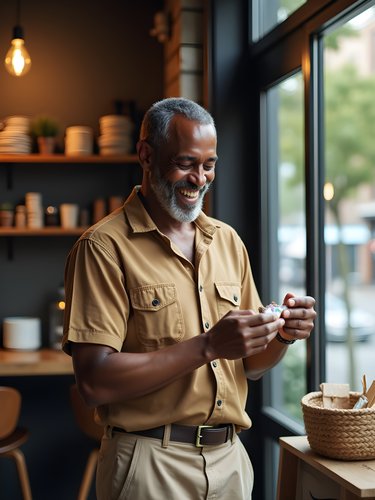







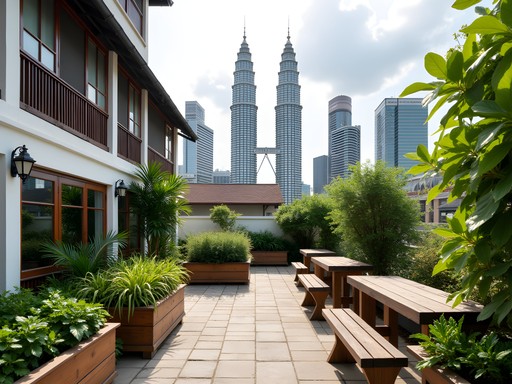

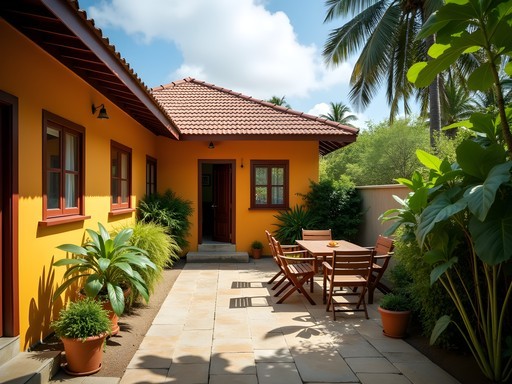


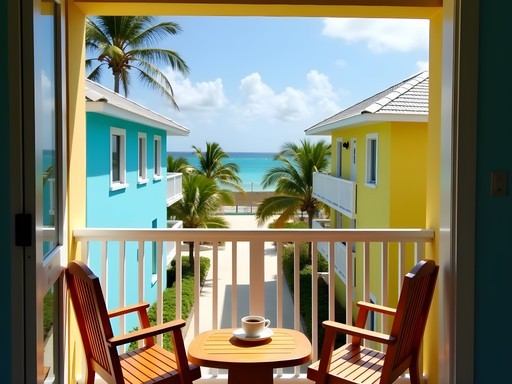


Comments
budgettraveler
Love the photos of the Busan beaches! Haeundae looks amazing.
TravelBug88
Love your street food market photos! Making me hungry just looking at them!
coffeepro
This is my first time planning a trip to Korea and I'm super nervous about the language barrier. Did you find it hard to get around with just English? Also wondering about the T-Money card you mentioned - is it easy to get at the airport? Your budget breakdown is giving me hope that I can actually afford this trip!
starking
Not Eric but I can tell you the T-Money card is super easy to get! Available at any convenience store in the airport. Just ask for "T-Money" and they'll know exactly what you mean. Language wasn't a huge issue in Seoul or Busan - subway has English signs and most young people speak some English.
coffeepro
That's a relief, thanks! Did you download any specific apps that helped with translation?
starking
Papago is better than Google Translate for Korean specifically. Also Naver Maps > Google Maps there!
Sarah Powell
Eric, this is such a comprehensive breakdown! I did a similar route last spring but definitely spent more than $50/day. Your section on vegan options was particularly helpful - finding plant-based food in Korea can be challenging with all the hidden fish sauce and anchovy broth. I'd add that the Gwangjang Market in Seoul has a few vendors now catering to vegan travelers - look for signs with 'vegan' written in English. For transportation between cities, I used the Korea Rail Pass which was worth it since I was bouncing between several cities. But for just Seoul to Busan, your budget bus option is definitely more economical! Great job showing that South Korea doesn't have to break the bank. Following for more of your budget guides!
Eric Brown
Thanks Sarah! Great tip about Gwangjang Market - I missed those vegan vendors somehow. Will add that to my notes for the next update!
summerstar
OMG I'M GOING NEXT MONTH!!! This guide is EXACTLY what I needed! Those street food recommendations are gold - can't wait to try the tteokbokki places you mentioned! 😍😍😍
bluelover
This looks amazing! How difficult was it to find budget accommodations in Seoul? I've heard it's pretty expensive.
Eric Brown
Hey there! I stayed in goshiwons (small studio rooms) and a couple of hostels. If you book 2-3 weeks ahead, you can find decent spots for $15-25/night. The key is staying a bit outside the main tourist areas like Myeongdong.
bluelover
Thanks Eric! Never heard of goshiwons before. Will definitely look into that option.
starking
Did this route last year! The subway system in Seoul is amazing and dirt cheap.
coffeepro
True! I was shocked how far you could go for like $1-2. Way better than Tokyo prices.
backpack_wanderer
If you're a coffee addict like me, bring a good travel mug! Coffee shops in Seoul are beautiful but expensive (5000+ won per cup). I saved tons by making instant coffee in my travel mug and only treating myself to cafes occasionally.
tripace
Smart tip! I'm definitely a coffee addict and was worried about that expense.
KimchiLover45
Just got back from Korea and wish I'd seen this before! The subway system is amazing though - super cheap and goes everywhere!
Jean Wells
As someone who's been living in Asia for over a decade, I appreciate how accurately you've captured the budget travel experience between these two cities. The T-Money card is indeed essential - I've found it saves approximately 15% on transport costs compared to single tickets. One addition to your Seoul budget tips: the Seoul City Tour Bus (around 12,000 won) offers an excellent overview for first-time visitors without the hefty price tag of private tours. For accommodation in Busan, I'd also recommend the guesthouses near Gwangalli Beach rather than Haeundae - equally beautiful views but typically 30-40% cheaper. Your vegan food section was particularly insightful; temple food restaurants are indeed the hidden gems of Korean cuisine.
SeoulSearcher
Thanks for the Gwangalli Beach tip! Do you have a specific guesthouse you'd recommend there?
Jean Wells
I stayed at Gwangan Beach Guesthouse last year - basic but clean, around 25,000 won/night for a dorm bed, and the rooftop has amazing bridge views. Perfect for budget travelers!
Venture X
Premium card with 2X miles, $300 travel credit, Priority Pass